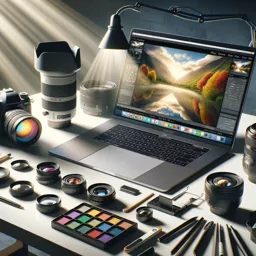Introduction
Underwater photography opens up a world of vibrant colors, fascinating marine life, and dynamic landscapes. However, unique lighting conditions present challenges that photographers must overcome to produce stunning imagery. This article explores various lighting techniques to enhance your underwater photos, ensuring every shot is filled with detail, color, and depth.
Understanding Light Underwater
Water absorbs and scatters light differently than air, with colors like reds and yellows fading as depth increases. The further you descend, the less natural light there is, and the color spectrum is limited. Recognizing this behavior is crucial to properly illuminating your subjects and capturing accurate colors.
Using Natural Light
The best time to shoot with natural light is during midday when the sun is directly overhead and water is clear. For shallow depths, sunlight can offer beautiful and soft illumination. Position your subject so that the sun is behind you, reducing harsh shadows and maximizing color vibrancy. Don’t forget to keep an eye on your exposure, as bright spots can quickly become overexposed.
Mastering Artificial Lighting
For both vibrant colors and clear detail, artificial lighting is a must—especially below 10 meters. Strobes and underwater video lights are the tools of choice for most photographers. Here’s how to make the most out of them:
- Use Twin Strobes: Position two strobes at a 45-degree angle to your camera. This setup reduces harsh shadows and evenly lights the subject.
- Manual Power Adjustment: Learn to adjust strobe power manually to suit conditions. Too much light can wash out a scene, while too little leaves it underexposed.
- Consider Diffusers: Attaching diffusers softens the strobe light, avoiding hotspots and creating more balanced illumination.
- Maintain Proper Distance: Place strobes close to the subject (ideally 1-2 arm lengths away) to minimize backscatter caused by particles in the water.
Creative Lighting Techniques
Once you’re comfortable with the basics, experiment with creative lighting:
- Backlighting: Place a light source behind the subject for dramatic silhouettes or to highlight translucent marine life.
- Side-lighting: Use a strobe or torch to the side to emphasize texture and details on corals or rocky structures.
- Constant Lighting: Underwater video lights let you see effects in real-time—perfect for shooting moving subjects or experimenting with light painting.
Tips for Success
- Always do a white balance check to ensure accurate colors.
- Stay patient—moving water and currents can change lighting quickly.
- Practice buoyancy control to keep your hands steady and positioning precise.
- Protect your gear from saltwater and rinse all equipment after each dive.
Conclusion
Mastering lighting in underwater photography transforms your images from flat and colorless to vibrant and lively. With practice and the right techniques, you can capture the enchanting beauty that lies beneath the surface. Dive in, experiment with your approach, and let the magic of underwater light reveal itself in your photos!
































